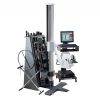
3 Measures of Success for New Rehab Programs
Practice ManagementThese steps will help you track program performance over time and make adjustments as needed. Here you’ll find three important metrics for new program development.
Starting a new rehab program at your clinic can seem like a daunting task. As a practice owner or director, your goal may be attracting new clients or referrals, or distinguishing your clinic with specialized programs. But how do you get started? Here you’ll find three important metrics for new program development. These factors will help you determine whether the new program is a good fit for your clinic.
No matter what route you decide to go, it is important to do plenty of research and planning in the beginning. This preparation will help ensure the success of the new offerings.
Each of these steps will also help you track program performance over time and make adjustments as needed. Let’s get to it – here are three metrics to evaluate at the beginning of new rehab program development.
Needs Assessments
The very first aspect to consider is a program’s utility for those they serve. Does this new rehab program help you better meet your patient’s needs? For example, let’s say you own an orthopedic clinic and over 85% of your patients are young, high-functioning individuals seeking care after a fracture.
In this case, it may not be beneficial to add a fall prevention program to your services. However, if you learn that a nearby geriatric clinic is closing, then that new program may be beneficial to help attract those new clients.
While we strive to better meet the needs of those around us, needs assessments don’t only take patients into consideration. There are also certain needs that you must consistently evaluate to stay true to the mission of your company. This is where it may get tricky, since you want to offer services that benefit patients but also enhance your business. Here are some questions you can use to get the process started:
- What are the goals of your company, both in a qualitative and quantitative sense?
- Are your patient satisfaction rates trending upward or downward?
- What is some specific feedback that you are getting from patients?
- How are your patients responding to recent changes you may have made?
- Have you discussed the prospective program with those you currently serve to gauge their potential interest?
- How many local businesses like mine are offering these services?
- How successful are those programs?
- What’s my competitive advantage to those businesses?
- Is there a need for this service in the local area?
- Or, if your program uses telehealth, is there a need for this service in the areas where I am concentrating my marketing efforts?
Once you have done research and taken a mental inventory of your business, you should have some insight into these questions. Then you can move forward with your program or modify it to better suit each party’s needs.
A Strong Basis of Evidence
As we have all learned, evidence-based practice is the foundation of quality care and positive outcomes. New treatment methods and assessments should be peer-reviewed by experts. Assistive devices and adaptive equipment should also be tested with the target demographic to ensure their suitability for certain populations.
Having a basis of evidence usually means there will be information on ease-of-use and potential for carryover. This data will allow you to do a thorough assessment of its appropriateness for any population you intend to assist.
Reliability and validity should also be heavily considered. These two terms are often used interchangeably, but both have distinct places in gauging a program’s effectiveness. You need appropriate measures to track the program’s performance over time, so measures should be both reliable and valid.
Reliability refers to the consistency of a certain tool. For example, if a tool is reliable, it will produce the same results over and over again. Validity, on the other hand, is defined as the assessment’s ability to measure what it states it does. This means it can be looked to as a verified measure.
Feasibility
By now, you may think that your program meets all the criteria we outlined thus far. However, there are still additional considerations to be made before a program can be implemented. You must also consider how realistic it is to adopt a new rehab program given your current resources, such as:
- Clinic space
- Equipment
- Time allotted for administrative duties during the implementation phase
- Licensed staff
- Initial orientation or training to receive credentials (if a certification is needed)
- Continual training to keep providers up-to-date on new practice trends
- Staff capacity for program implementation
- Marketing consultants, web specialists, and other professionals to help spread the word about the program
- LEAN specialists to help develop efficient clinical workflows surrounding the program
- Infrastructure and procedures set up to measure performance (surveys, reports, follow-up emails, mailed comment cards, etc.)
- Budget to attain all of the above
As you can see, this is quite a bit of information to consider before implementing any program or service offering. Therapy managers and directors should carefully weigh each factor that could impact the care they provide and their profit margins. This should not deter anyone from expanding their clinic, rather encourage administrators to do ample preparation before making any decisions.
Use SMART Goals
Goal-setting is equally as important for providers as it is for patients, so managers are encouraged to use the SMART formula. By writing specific, measurable, attainable, relevant, and time-sensitive goals, administrators can develop solid results from the planning, implementation, and post-implementation phases.
Track Your Success With Objective Measures
With BTE, you can track success at the client level. BTE believes in an objective approach to rehab. Instead of measuring progress with subjective observation, BTE’s rehab equipment shows you real data on clients’ performance. You can set goals, customize evaluations and treatments, and produce easy-to-share progress reports.
Real-time visual feedback and post-session charts and graphs help keep clients informed and motivated. Not to mention, they provide clear documentation of the value your treatment provides.
Adding New Rehab Programs in the Clinic
After completing a needs assessment, evaluating the evidence basis, and determining the feasibility of your new rehab program, you are ready to bring it to the clients. Adding new programs firstly shows that you are ahead of the competition and providing something that other clinics aren’t. Offering new services also demonstrates your desire to connect your patients with the best care.
Tracking results along the way will help you make thoughtful additions and changes to further enhance the work the program does. This will make the process not only rewarding but even more effective for all the patients who take advantage of your program.
Brittany Ferri, PhD, OTR/L, CPRP is an Occupational Therapist and owner of Simplicity of Health where she provides health writing, consulting, and program development services. She is passionate about client-centered care and the intersection of technology and health. To learn more, visit www.simplicityofhealth.com





